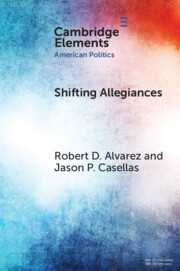The creation of racial/ethnic majority-minority districts lies at the heart of debates regarding the utility of descriptive representation for minority policy advocacy. The general puzzle that emerges from these debates, however, rests on the possibility that by electing representatives who are policy outsiders, minority interests would exert little influence in the policy decisions of median-dominated institutions. The authors present a model that shows how majority-minority districts can act to (1) increase the likelihood of electing minority representatives who are unique policy advocates and (2) concurrently increase the level of institutional status of descriptive representatives. The empirical analysis employs a novel data set of observations on political, sociodemographic, roll-call and institutional position, covering twenty U.S. states in the late 1990s and over 2,600 state legislative seats to show how majority-minority districts produce policy outsiders as well as institutional insiders.
